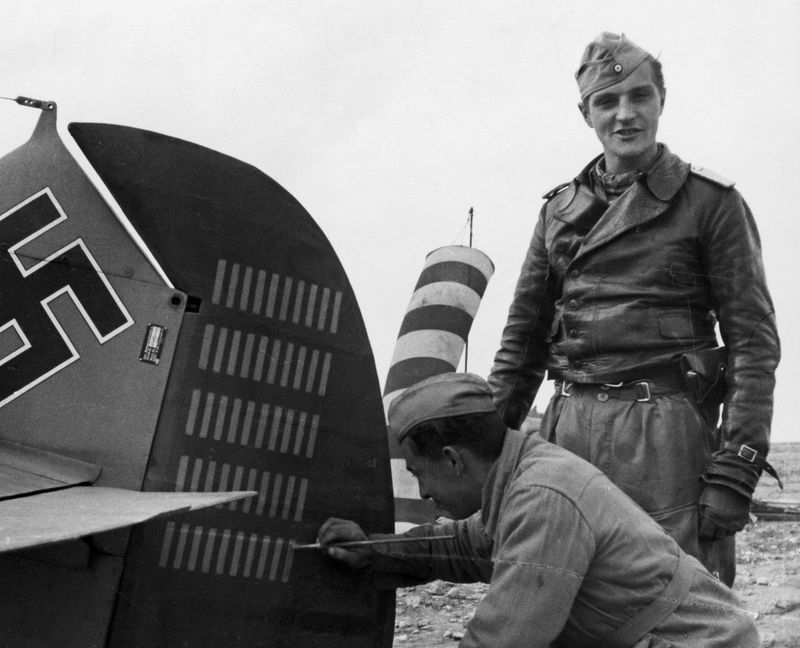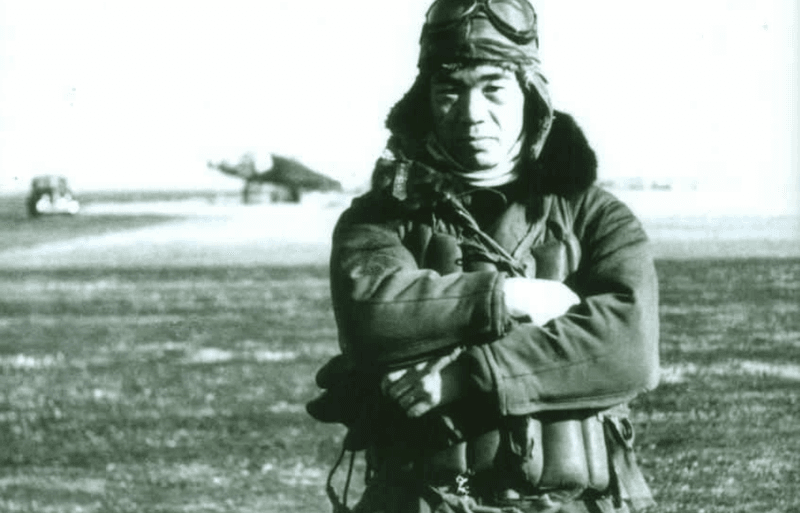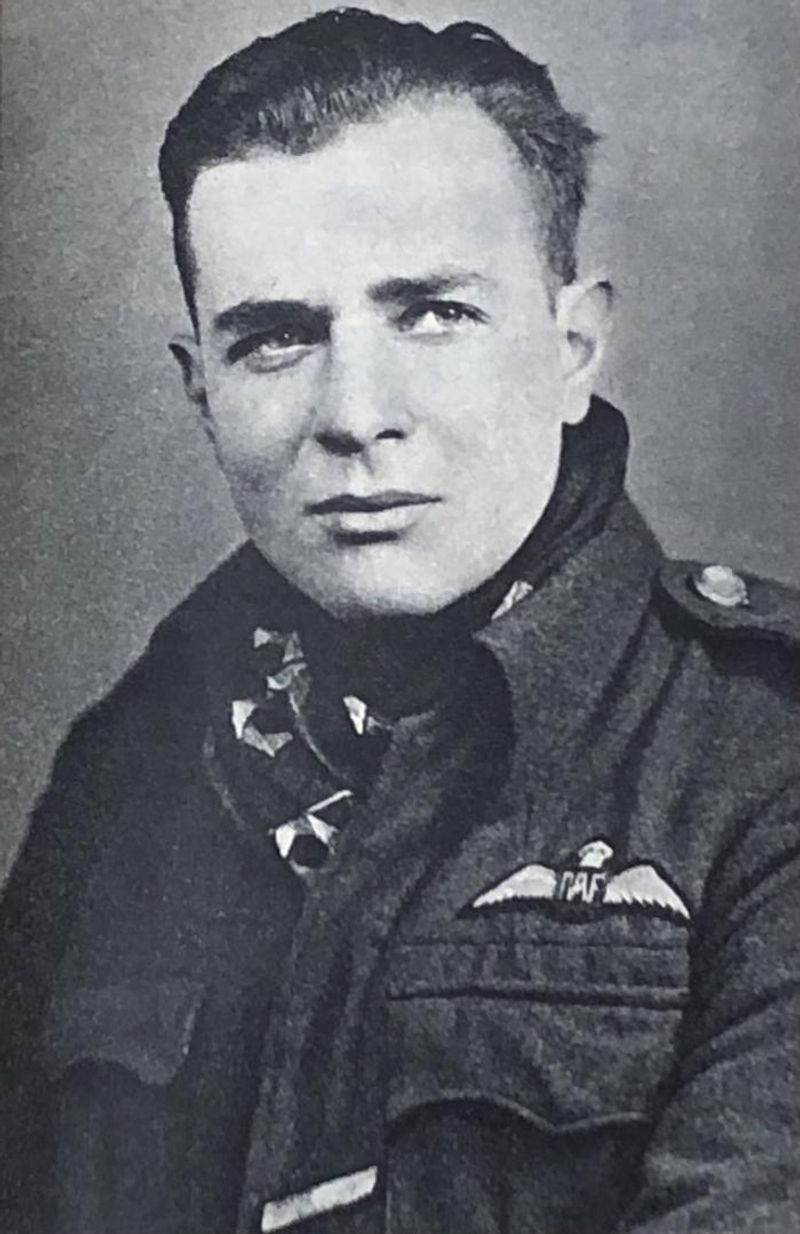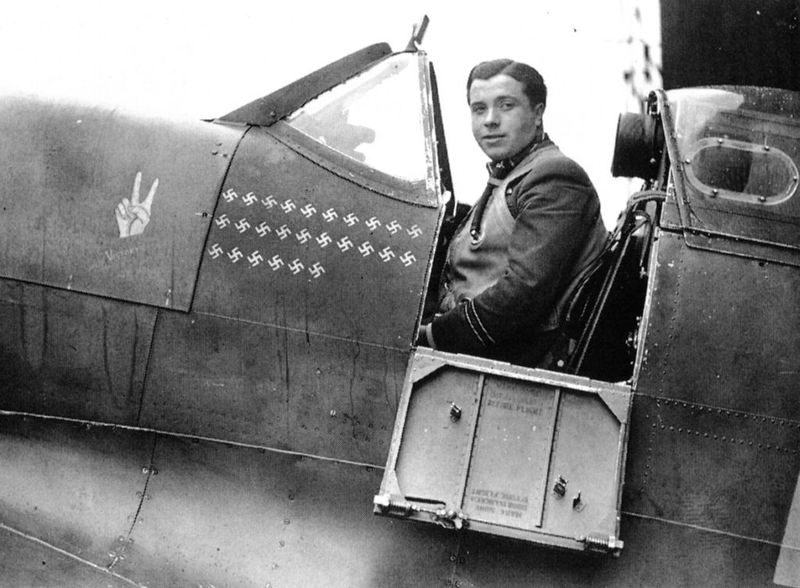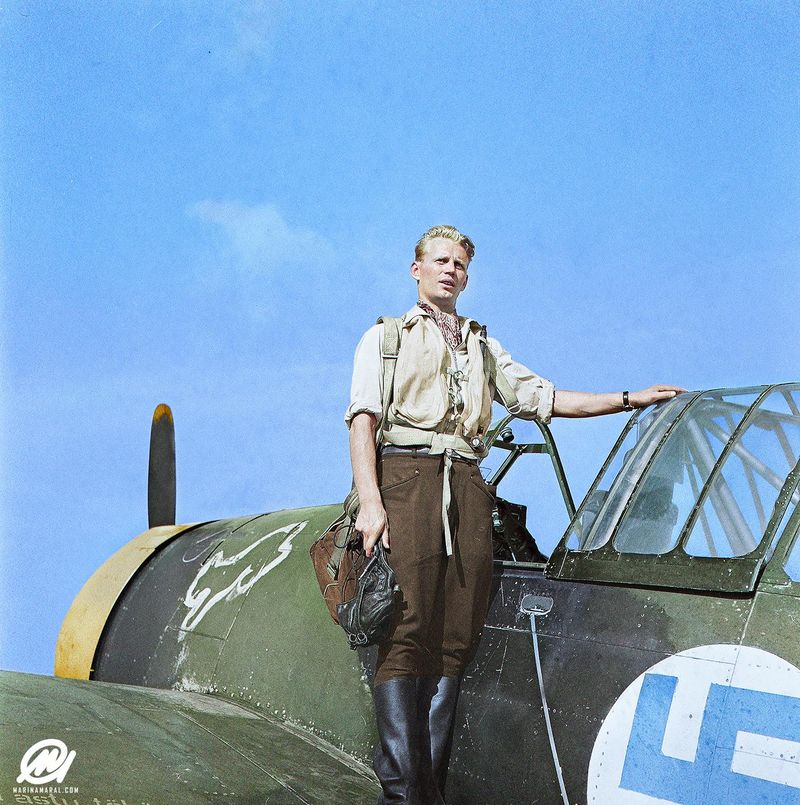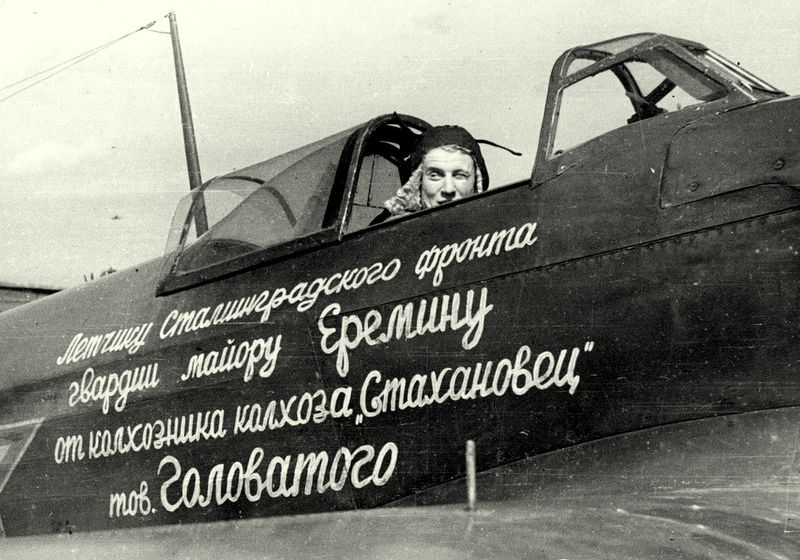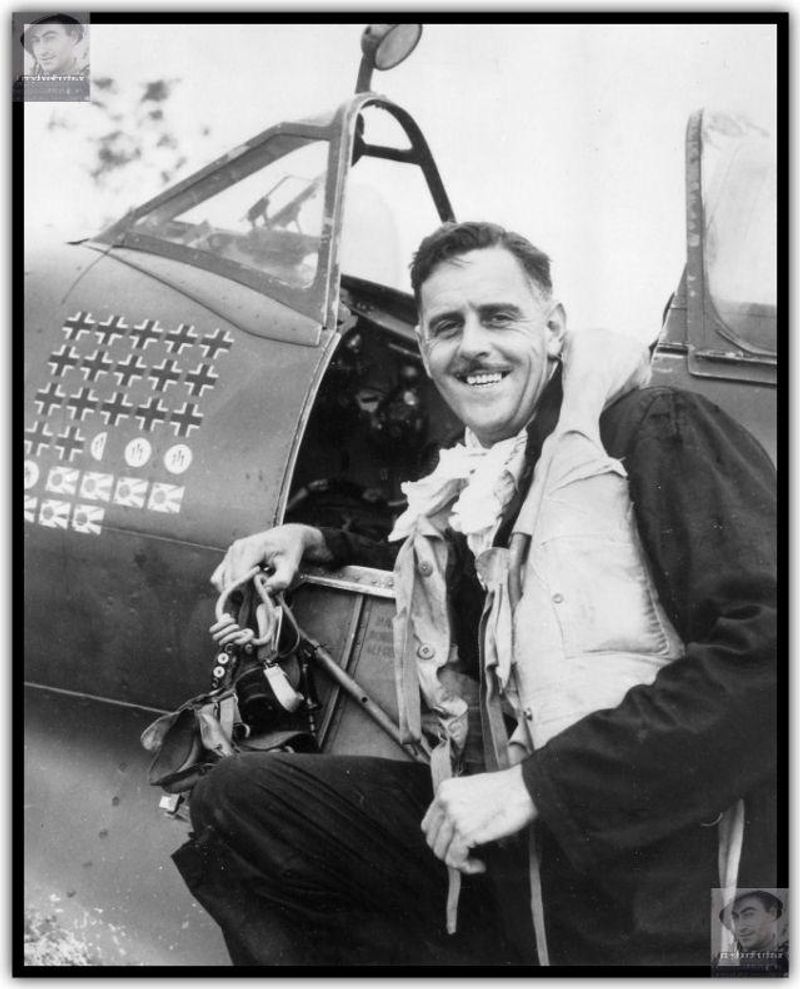The skies of World War II were home to legendary air battles where fighter pilots achieved remarkable feats of courage. While names like Chuck Yeager remain household words, many extraordinary pilots never returned home to tell their stories.
These forgotten heroes, who scored incredible numbers of aerial victories against overwhelming odds, deserve to be remembered for their skill, bravery, and ultimate sacrifice.
1. Hans-Joachim Marseille – The Star of Africa
Blonde-haired and blue-eyed, Marseille embodied the Nazi propaganda machine’s ideal Aryan warrior, yet his rebellious spirit and jazz-loving personality constantly landed him in trouble with superiors. Flying over the North African desert, he developed a unique combat style—attacking British formations from below, often alone against overwhelming odds.
His marksmanship was legendary, once downing 17 Allied aircraft in a single day. Despite 158 confirmed kills, death came not from enemy bullets but from a technical malfunction.
Forced to bail out when his cockpit filled with smoke, Marseille struck the tail of his aircraft and fell to the desert below, just 22 years old.
2. Saburō Sakai – The Samurai of the Skies
Unlike many on this list, Saburō Sakai actually survived the war—though his journey home became the stuff of legend. After taking a bullet that passed through his skull during combat over Guadalcanal, the partially blinded and paralyzed Sakai navigated his damaged Zero fighter nearly 560 miles back to his base.
What’s often forgotten is how many of Japan’s other extraordinary pilots vanished without recognition. Tetsuzō Iwamoto, possibly Japan’s highest-scoring ace with over 200 claimed victories, returned to a defeated homeland only to fade into obscurity.
Many like him died by suicide or lived in poverty, their achievements buried by Japan’s complicated relationship with its wartime past.
3. Pierre Clostermann – Voice of the Free French
While Clostermann himself survived to write his classic memoir “The Big Show,” countless of his Free French compatriots vanished into the fog of war. Flying with the RAF while his homeland remained under Nazi occupation, Clostermann scored 33 confirmed victories in Spitfires and Tempests.
His fellow French pilots fought with a special fury, knowing their families lived under enemy rule. Many never returned to see their liberated homeland.
Marcel Albert, Henri Lafont, and dozens more French aces perished fighting for a free France, their sacrifices overshadowed by larger Allied forces. Their stories, once celebrated in their homeland, have faded from international memory despite their exceptional courage.
4. Richard Bong – America’s Ace of Aces
Richard Bong’s story ends with cruel irony. After surviving 200 combat missions and downing 40 enemy aircraft in the Pacific Theater, he didn’t fall to enemy fire but to mechanical failure.
The Wisconsin farm boy turned P-38 Lightning pilot became America’s highest-scoring ace, earning the Medal of Honor for his extraordinary skill and courage. Yet on August 6, 1945—the very day the atomic bomb fell on Hiroshima—Bong’s P-80 Shooting Star jet fighter malfunctioned during a test flight in California.
At just 24, with the war nearly over, America’s greatest ace perished before he could enjoy the peace he helped secure.
5. Eric Lock – The Shropshire Farmer Who Became a Legend
They called him “Sawn Off Lockie” for his short stature, but Eric Lock stood tall among Battle of Britain heroes. The farmer’s son from Shropshire downed 26 enemy aircraft in just 15 weeks during the crucial air battle that saved Britain from invasion.
After surviving being shot down and severely wounded in 1940, Lock returned to combat with the same ferocious determination. His Spitfire disappeared over the English Channel during a low-level attack on German positions in 1941.
No trace of Lock or his aircraft was ever found, his body claimed by the same waters he had defended so brilliantly. At just 22, one of Britain’s greatest natural pilots vanished forever.
6. George Preddy – Christmas Day Tragedy
George Preddy’s P-51 Mustang, “Cripes A’Mighty,” became one of the most feared sights in European skies. The North Carolina native possessed an almost supernatural gift for aerial combat, downing nearly 27 enemy aircraft and becoming the highest-scoring Mustang ace in Europe.
His end came with tragic irony. On Christmas Day 1944, during the Battle of the Bulge, Preddy was pursuing German fighters low over the front lines when American anti-aircraft gunners mistook his P-51 for an enemy aircraft.
Fatally hit by friendly fire, Preddy crashed behind American lines. His brother William, also a fighter pilot, would die in similar circumstances just four months later.
7. The Forgotten Finnish Eagles
Finland’s air force achieved the impossible during WWII. Flying outdated Brewster Buffalo fighters—rejected as obsolete by other air forces—against modern Soviet aircraft, Finnish pilots like Ilmari Juutilainen achieved staggering victory-to-loss ratios.
While Juutilainen survived with 94 confirmed kills, most of his compatriots weren’t so fortunate. Hans Wind, Eino Luukkanen, and dozens more exceptional Finnish aces perished either in combat or soon after the war, their achievements largely unknown outside aviation circles.
Fighting both Soviet and German forces at different points, these pilots defended their small nation against overwhelming odds, often flying aircraft held together with spare parts and determination.
8. The Soviet Eagles Stalin Erased
The Soviet Union produced some of WWII’s most accomplished aces, yet their stories remained largely hidden behind the Iron Curtain. Pilots like Ivan Kozhedub (62 victories) and Alexander Pokryshkin (59 victories) survived to receive recognition, but hundreds of equally skilled Soviet aces perished anonymously.
Konstantin Kokkinaki and Nikolai Gulayev achieved remarkable feats flying against the Luftwaffe’s best, yet their stories were suppressed or manipulated by Stalin’s propaganda machine. Many who survived combat later disappeared in political purges.
Flying often inferior aircraft against Germany’s experienced pilots, these Soviet aces developed innovative tactics that helped turn the tide on the Eastern Front, their sacrifices measured in the millions.
9. Frank O. Hunter – The Commander History Forgot
Before the war, Frank Hunter was already a legend—a racing pilot who set speed records and pioneered aviation techniques. During WWII, he commanded the Eighth Air Force’s VIII Fighter Command during crucial periods, mentoring future aces while scoring several kills himself.
Despite his contributions to aerial warfare doctrine and fighter tactics, Hunter’s name faded from public consciousness after the war. Unlike more publicity-minded generals, he avoided the spotlight.
Hunter Air Force Base in Georgia once bore his name but was later renamed, erasing one of the last public reminders of this pivotal figure. His story represents countless senior officers whose strategic brilliance saved lives but earned little lasting recognition.
10. Emil “Bubi” Lang – 18 Victories in One Day
Emil Lang’s aerial combat record reads like fiction. In just 18 months of combat, the German pilot claimed 173 victories, including an astonishing 18 Soviet aircraft in a single day—perhaps the most remarkable day of aerial combat by any pilot in history.
His fellow pilots called him “Bubi” (little boy) for his youthful appearance, but enemies found nothing childish about his lethal precision. Flying the Focke-Wulf Fw 190 on the Eastern Front, Lang seemed unstoppable.
Death finally caught him in September 1944, not over Russia but while defending Germany against American bombers. Shot down near Bonn, Lang’s extraordinary combat career ended at just 25 years of age.
11. Clive Caldwell – The Desert Shark
Australia’s greatest ace earned his nickname “Killer Caldwell” not from bloodthirst but from lethal efficiency. With 28.5 confirmed victories across North Africa and the Pacific, Caldwell developed specialized tactics for desert warfare, including innovative methods for ambushing Italian and German formations.
While Caldwell survived the war, many of his Australian compatriots vanished without recognition. Pilots like Nicky Barr and John Jackson achieved remarkable success before disappearing into the vast theater of war.
Commonwealth aces often received less publicity than their American counterparts, despite flying older aircraft against experienced Axis pilots. Their contributions—particularly in holding North Africa when Britain stood virtually alone—deserve greater recognition in the broader story of Allied victory.

